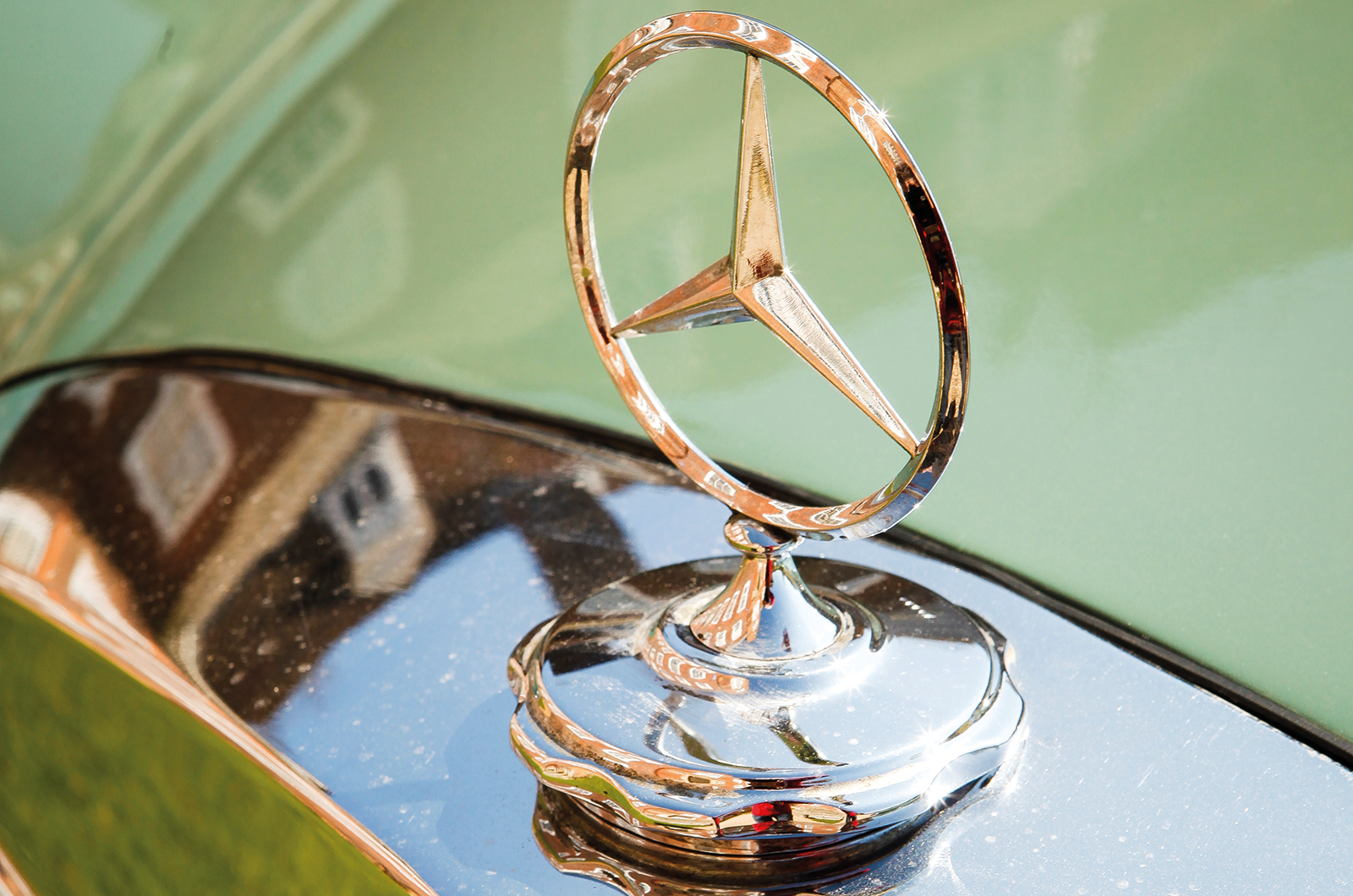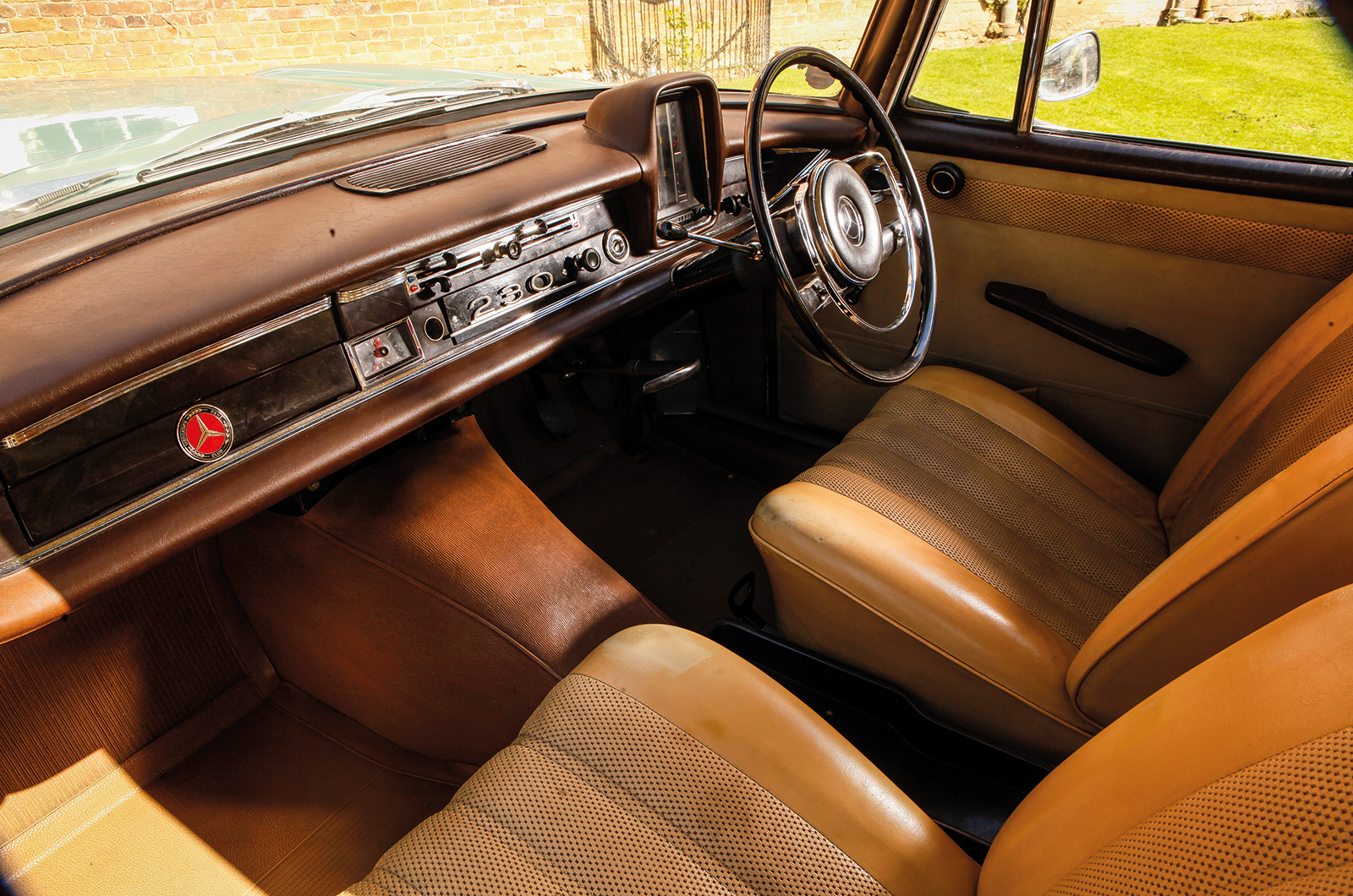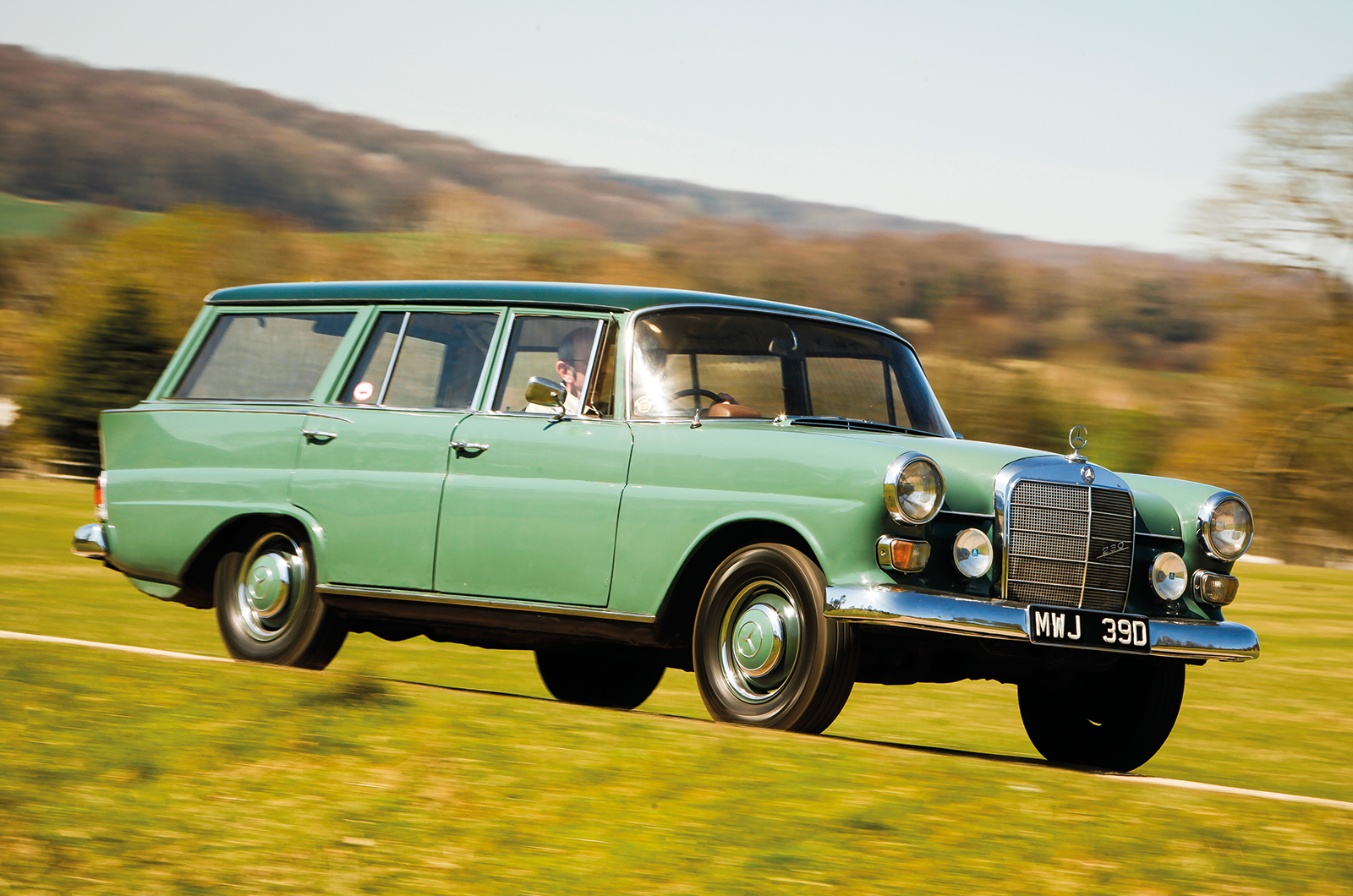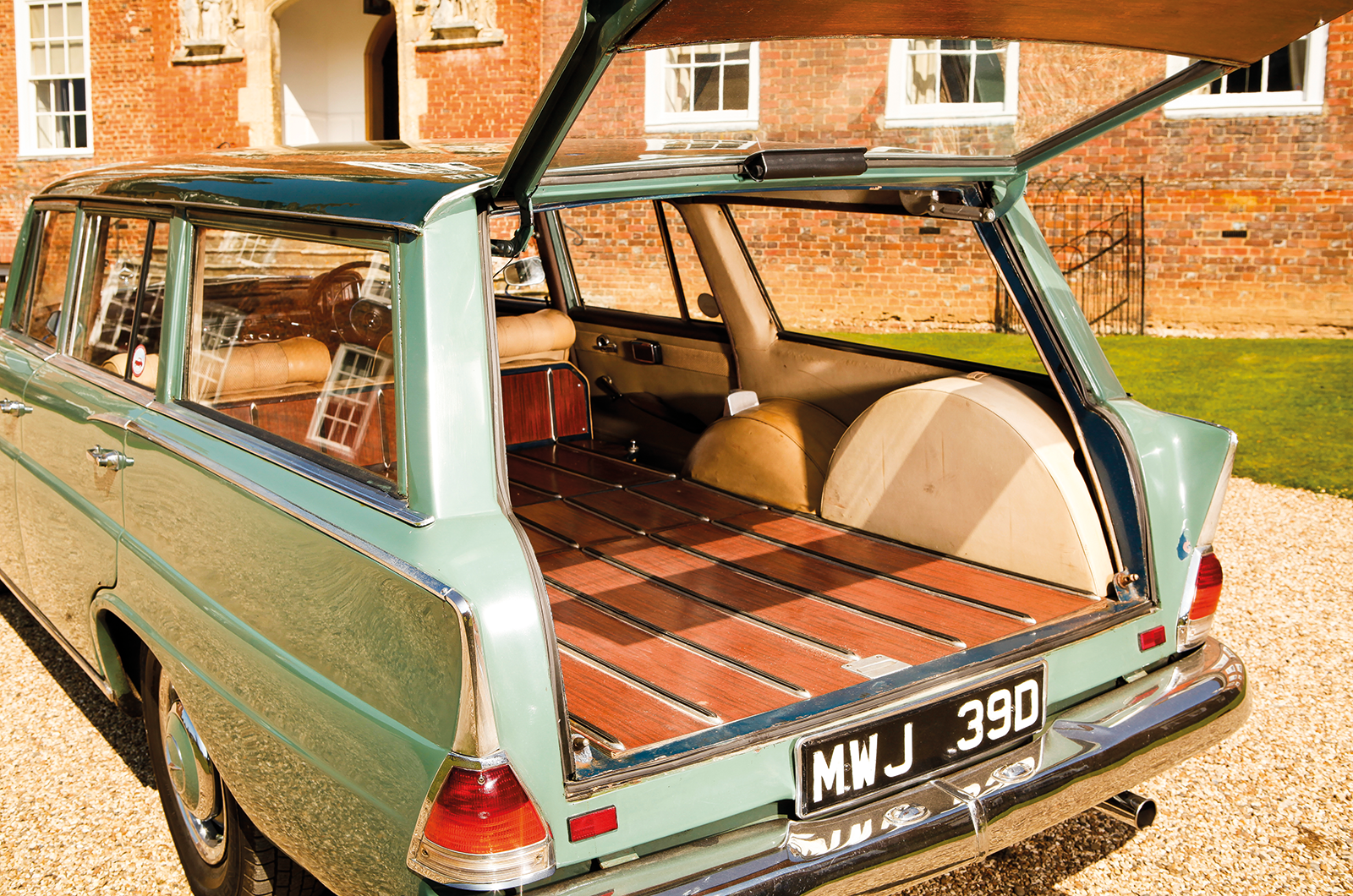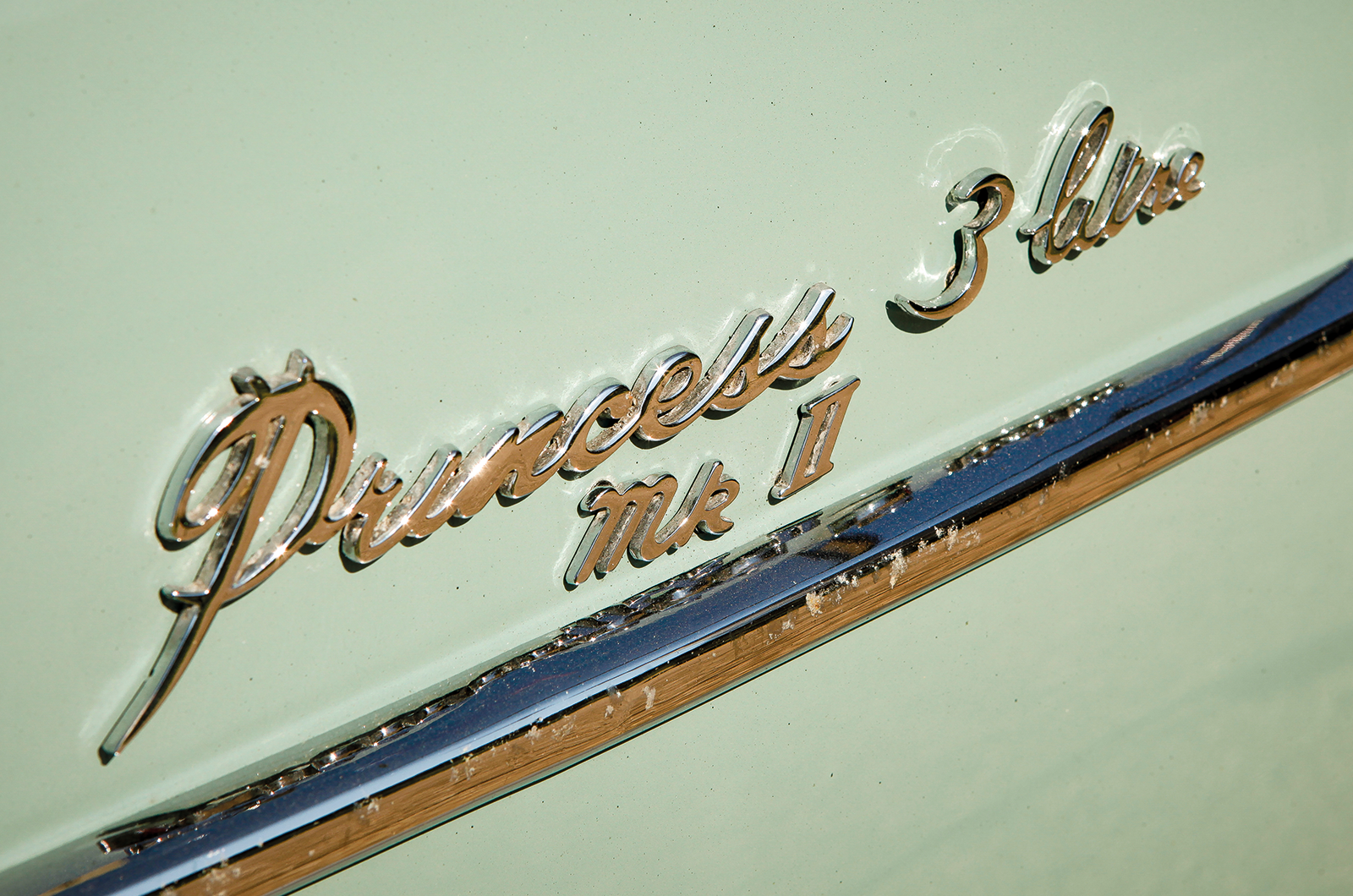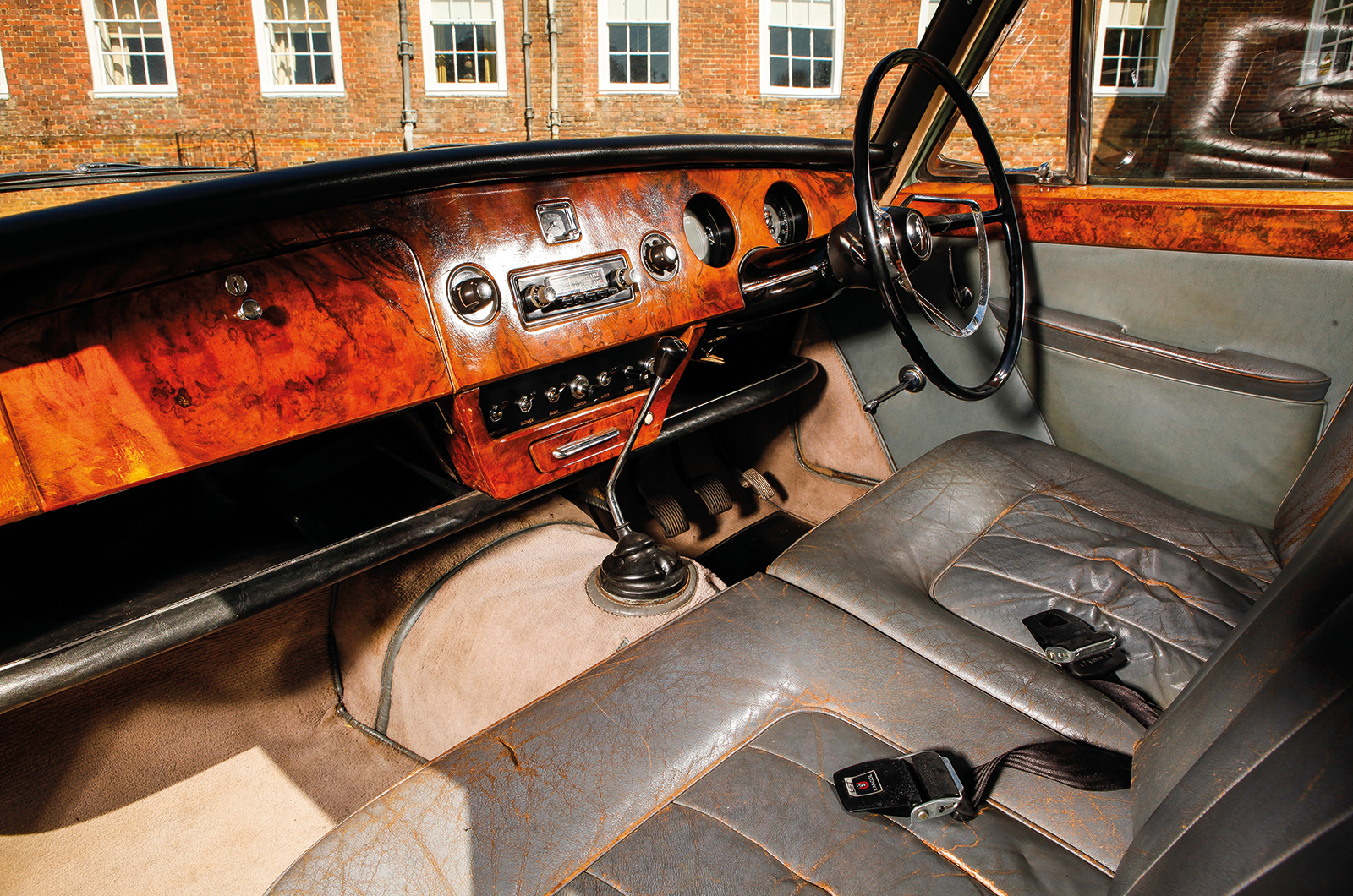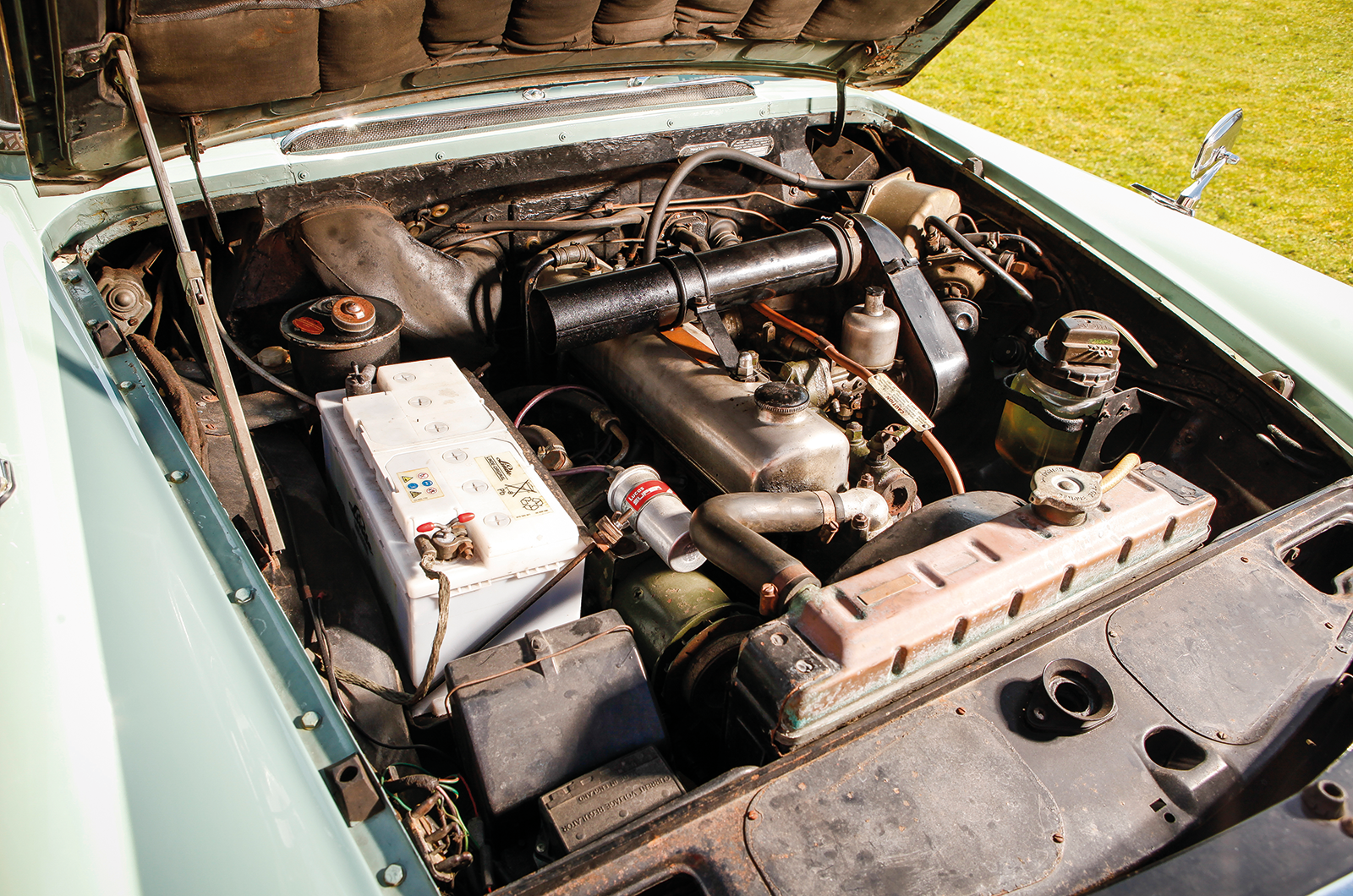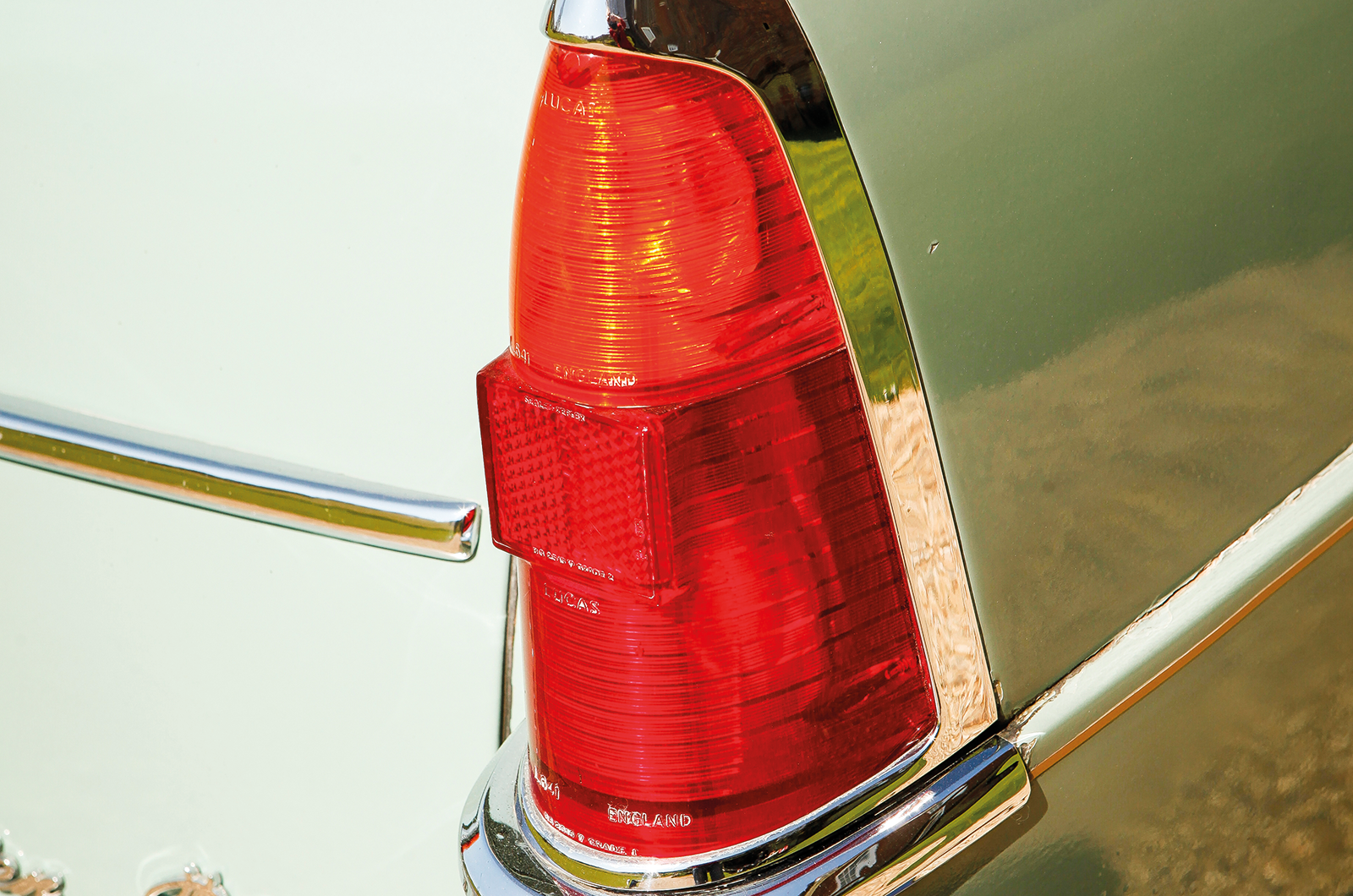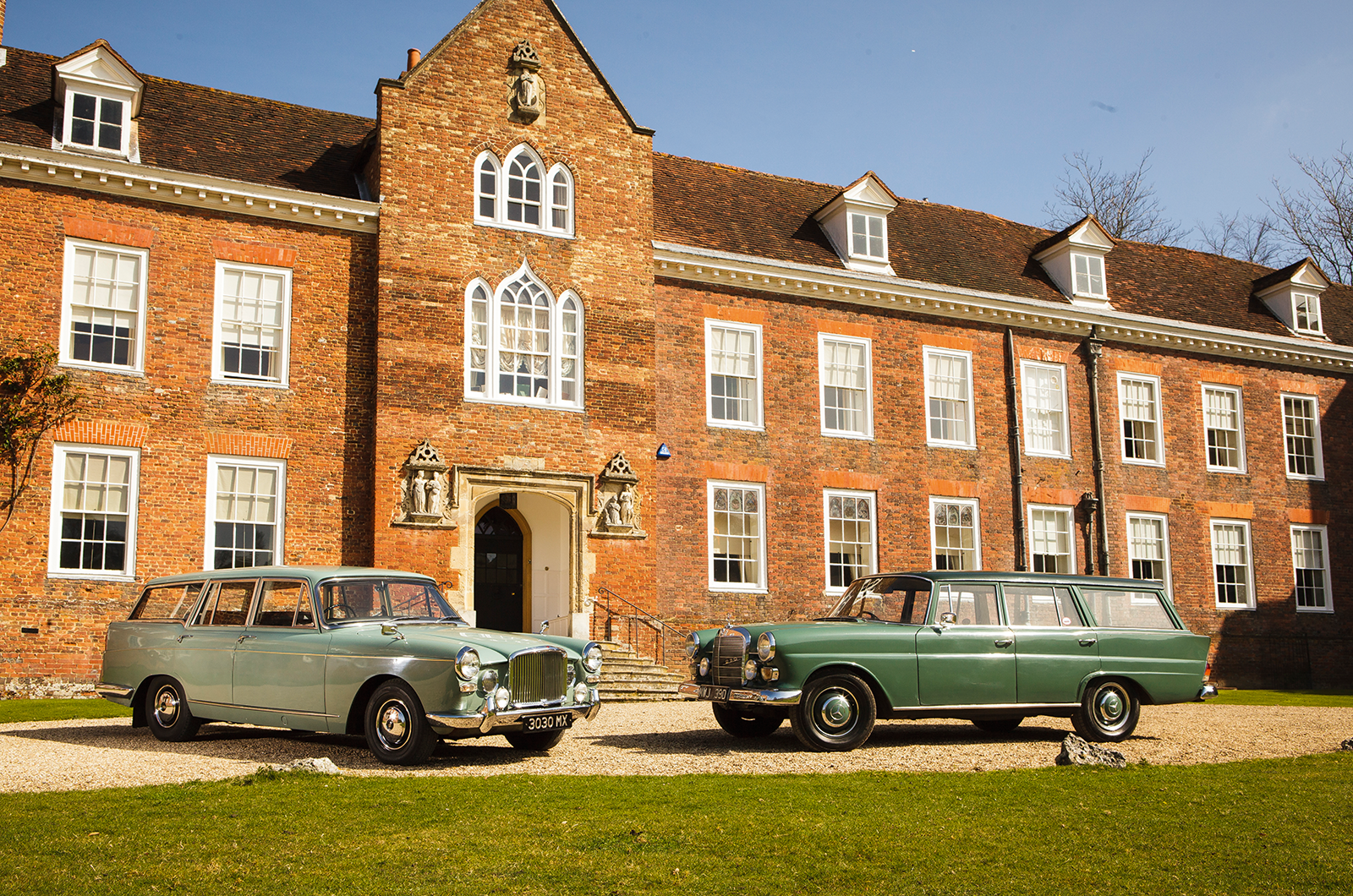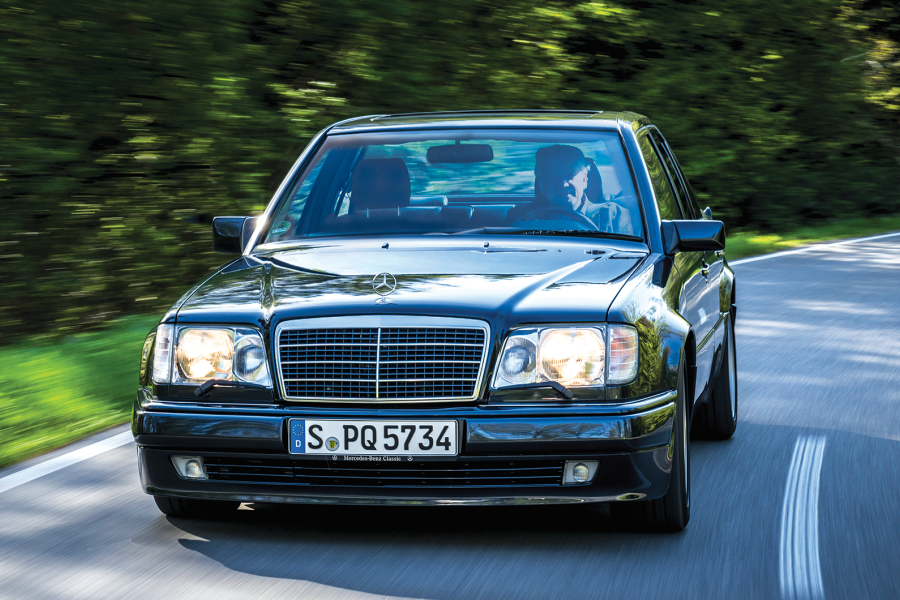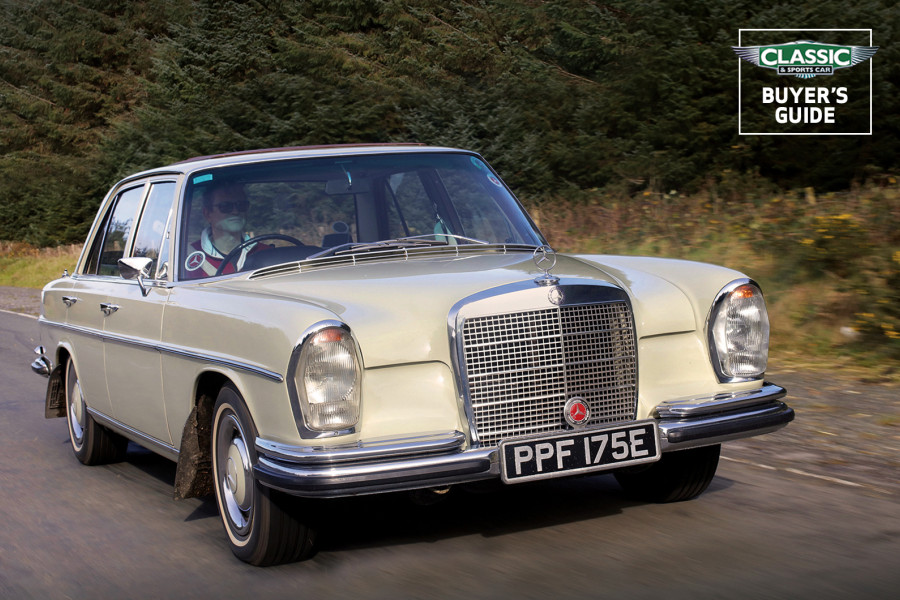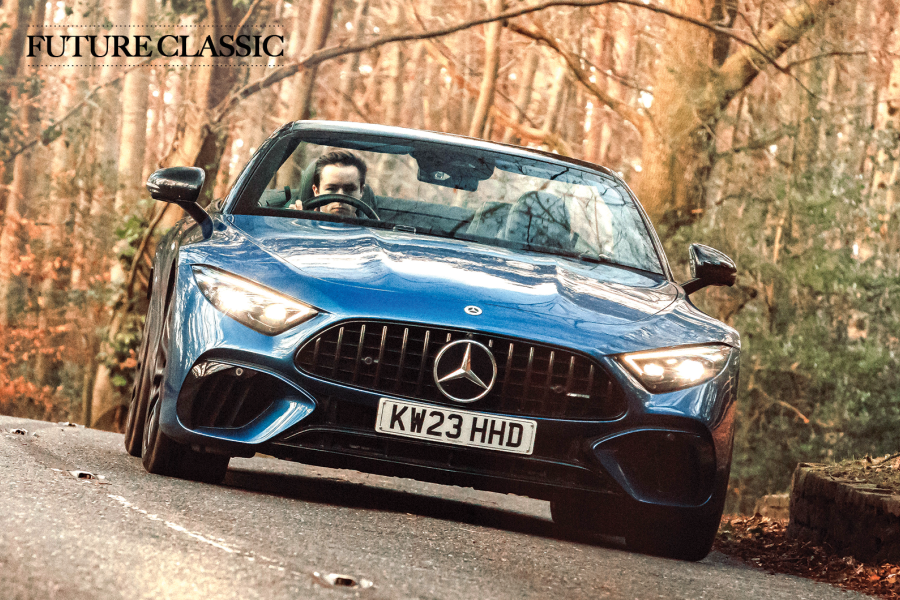But, just in case the proud owner had any delusions of grandeur, there are two elements to remind them of their East Cheam roots: the indicators are operated via a Mini-style flashing stalk, and the C-series engine makes any VdP sound like a Scotland Yard car at the conclusion of an Edgar Wallace Mystery.
Above all, these two estates illustrate how definitions of ‘luxury’ can vary so widely.
The Vanden Plas Countryman’s rear lights are blended into the ornate fins
The Mercedes-Benz appears principally concerned with integrity of engineering rather than decoration.
The tailfins may have been created to appeal to the US market and the vertical speedometer is undeniably a gimmick, but the ethos of the Universal remains one of durability.
The occupants are conveyed in comfort without any sense of being cossetted, while the driver is secure in the knowledge that the gearchange will be as slick and the engine as infallible after hundreds of thousands of miles.
It did not matter whether your Fintail was a taxi in Lisbon, a long-wheelbase 300SE transporting a diplomat along Berlin’s Wilhelmstraße, or a heavily laden Universal travelling across South Africa, the quality would be equally uncompromised.
As for the Vanden Plas, practicality would have probably been a far lesser consideration in its purchase; a Super Snipe estate was more than £1000 cheaper and, indeed, the A60 Countryman was highly capacious.
The Vanden Plas Countryman’s luggage area is less practical than the Mercedes’
In essence, it reminds me of the world of Ian Fleming’s novels that, in the words of historian David Cannadine, celebrated the ‘quintessential clubland hero, flourishing in the very era when they were deemed to be doomed’.
Retired Brigadiers may have seen clear evidence of the decline of deference all around them, but in the Countryman’s walnut-veneered cabin of folding picnic tables and leather upholstered armchairs they were safely cocooned.
Either of these splendid vehicles would be eminently suited to touring the grounds of Stonor and it is impossible to choose a victor; they are not so much competitors, as complementary to each other.
The Universal is elegant, efficient and ever so slightly menacing – equally suited to a new Germany of Brutalist concrete or a supporting role in a Le Carré or Deighton Cold War drama.
But for a weekend of grouse shooting, a point-to-point race, or anyone just wanting to make an impact at the Young Farmers’ dance, little could match the Countryman.
And that is why it would find a place in my garage, my social delusions notwithstanding.
Images: Tony Baker
Thanks to: John Lakey, Bill Price and the Cambridge-Oxford Owners’ Club; everyone at Stonor Park
This was first in our March 2017 magazine; all information was correct at the date of original publication
Factfiles
Mercedes-Benz Universal
- Sold/number built 1965-’68/c2000
- Construction steel monocoque
- Engine iron-block, alloy-head, single-overhead-cam 2306cc straight-six, twin Solex carburettors
- Max power 118bhp @ 5400rpm
- Max torque 137lb ft @ 3800rpm
- Transmission four-speed manual, RWD
- Suspension: front unequal-length wishbones, coil springs, anti-roll bar rear single-joint, low-pivot swing axles, coil springs, horizontal compensator spring; telescopic dampers f/r
- Steering recirculating ball
- Brakes discs front, drums rear, with servo
- Length 15ft 6½in (4737mm)
- Width 5ft 10½in (1791mm)
- Height 5ft (1524mm)
- Wheelbase 9ft ¼in (2750mm)
- Weight 3108lb (1410kg)
- 0-60mph 16 secs
- Top speed 103mph
- Price new DM15,900
Vanden Plas Countryman
- Sold/number built 1961-’64/six
- Construction steel monocoque
- Engine all-iron, overhead-valve 2912cc straight-six, twin SU carburettors
- Max power 120bhp @ 4750rpm
- Max torque 163lb ft @ 2750rpm
- Transmission three-speed manual with overdrive, driving rear wheels
- Suspension: front independent, by double wishbones, coil springs, telescopic dampers rear live axle with semi-elliptic leaf springs, lever-arm dampers, optional Selectaride; anti-roll bar f/r
- Steering cam and peg; optional assistance
- Brakes discs front, drums rear, with servo
- Length 15ft 8in (4788mm)
- Width 5ft 8½in (1727mm)
- Height 4ft 11in (1498mm)
- Wheelbase 9ft 2in (2794mm)
- Weight 3415lb (1549kg)
- 0-60mph 16.9 secs
- Top speed 105mph
- Price new c£3000
Enjoy more of the world’s best classic car content every month when you subscribe to C&SC – get our latest deals here
READ MORE
Mercedes-Benz 220S: Ponton perfection
Humber Imperial vs Vanden Plas Princess 4 Litre R: to the manor borne
Estates of the nations: Fiat vs Volvo vs Triumph
Andrew Roberts
Andrew is a long-time contributor to Classic & Sports Car

